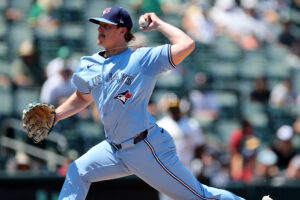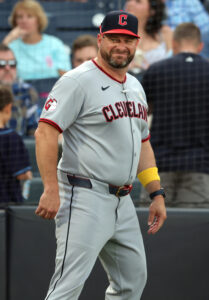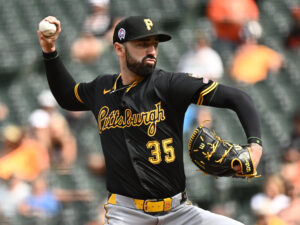
Bruihl, 29 in June, signed a minor league deal with the Jays ahead of the 2025 campaign. He eventually earned a roster spot and had a decent season, in some ways. His 5.27 earned run average in the majors doesn’t look nice, but that came in a small sample of 13 2/3 innings. He also had a strong 27.7% strikeout rate and 46.2% ground ball rate in that time. His 10.8% walk rate was a bit high but he was really held back by a .459 batting average on balls in play. ERA estimators such as his 4.16 FIP and 3.42 SIERA were far more optimistic.
His minor league numbers look more like those latter metrics than his big league ERA. He tossed 42 innings for Triple-A Buffalo with a 3.43 ERA, 27.8% strikeout rate, 9.1% walk rate and 58.4% ground ball rate.
Bruihl doesn’t throw especially hard. His two-seamer averaged just 90.2 miles per hour this year. He also mixed in a cutter at 87.5 mph and a 78.4 mph slider. He nonetheless managed to punch guys out and avoid hard contact. The Jays sent him between Triple-A and the majors this year but he was enough of a factor to be on their ALDS roster against a lefty-heavy Yankee lineup. He wasn’t carried on the roster for subsequent rounds.
Despite some intriguing numbers this year, he got squeezed off Toronto’s roster this week. He exhausted his final option in 2025 and will be out of options going forward. With the Jays also having lefties Brendon Little, Mason Fluharty and Eric Lauer on the roster, they designated Bruihl for assignment.
The Guards are intrigued enough to bring him aboard. Their southpaw relief contingent is currently headlined by Erik Sabrowski and Tim Herrin but those two each walked more than 15.5% of batters faced in 2025. Joey Cantillo could be in the mix but he’s more of a long reliever. With Bruihl’s option status, he’ll have to perform but there’s a path for him to earn a job in the Cleveland bullpen. He has under two years of service time, meaning he hasn’t yet qualified for arbitration and can be controlled for five full seasons if he can hold a roster spot.
The unfortunate side effect of adding Bruihl is that the Guards have cut “Big Christmas” from the roster barely a week before the holiday he’s named after. Noel has shown some big power in his career but also has a poor approach at the plate. In his 351 big league plate appearances, 32.8% of them have ended in a strikeout while he has only drawn a walk 4.8% of the time.
Despite hitting 19 home runs, his .193/.242/.401 batting line translates to a 79 wRC+. He’s not a good defender nor is he a burner on the basepaths, so he really needs to hit to provide value. The homers help but the overall offense has been lacking.
Like Bruihl, he exhausted his final option season in 2025. That was going to make it harder for the Guards to keep him on the roster, especially with guys like Chase DeLauter and George Valera reaching the big leagues this year.
He’ll head into DFA limbo and see if the Guards can line up a trade or if anyone wants him on waivers. If he lands somewhere else, he can be controlled for five full seasons. Since he has less than three years of service and doesn’t have a previous career outright, he will not have the right to elect free agency if he is passed through outright waivers unclaimed.
Photo courtesy of Ken Blaze, Dennis Lee, Imagn Images
]]>
